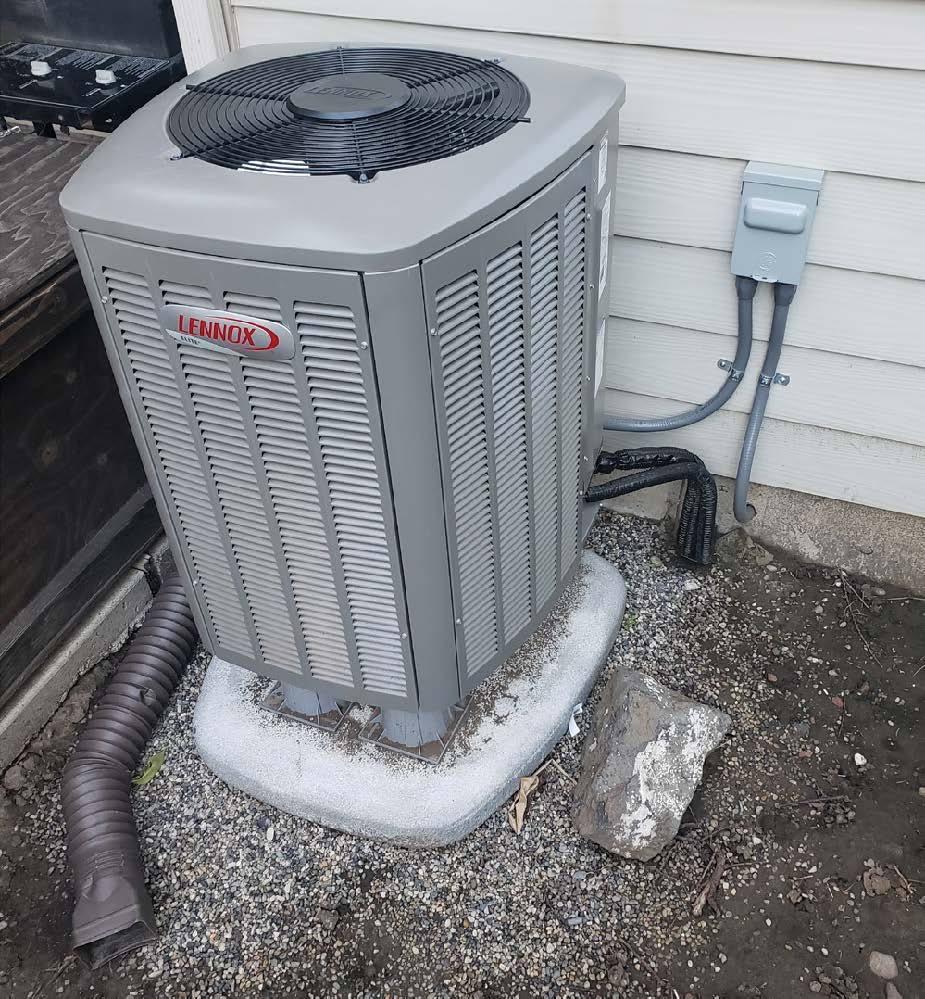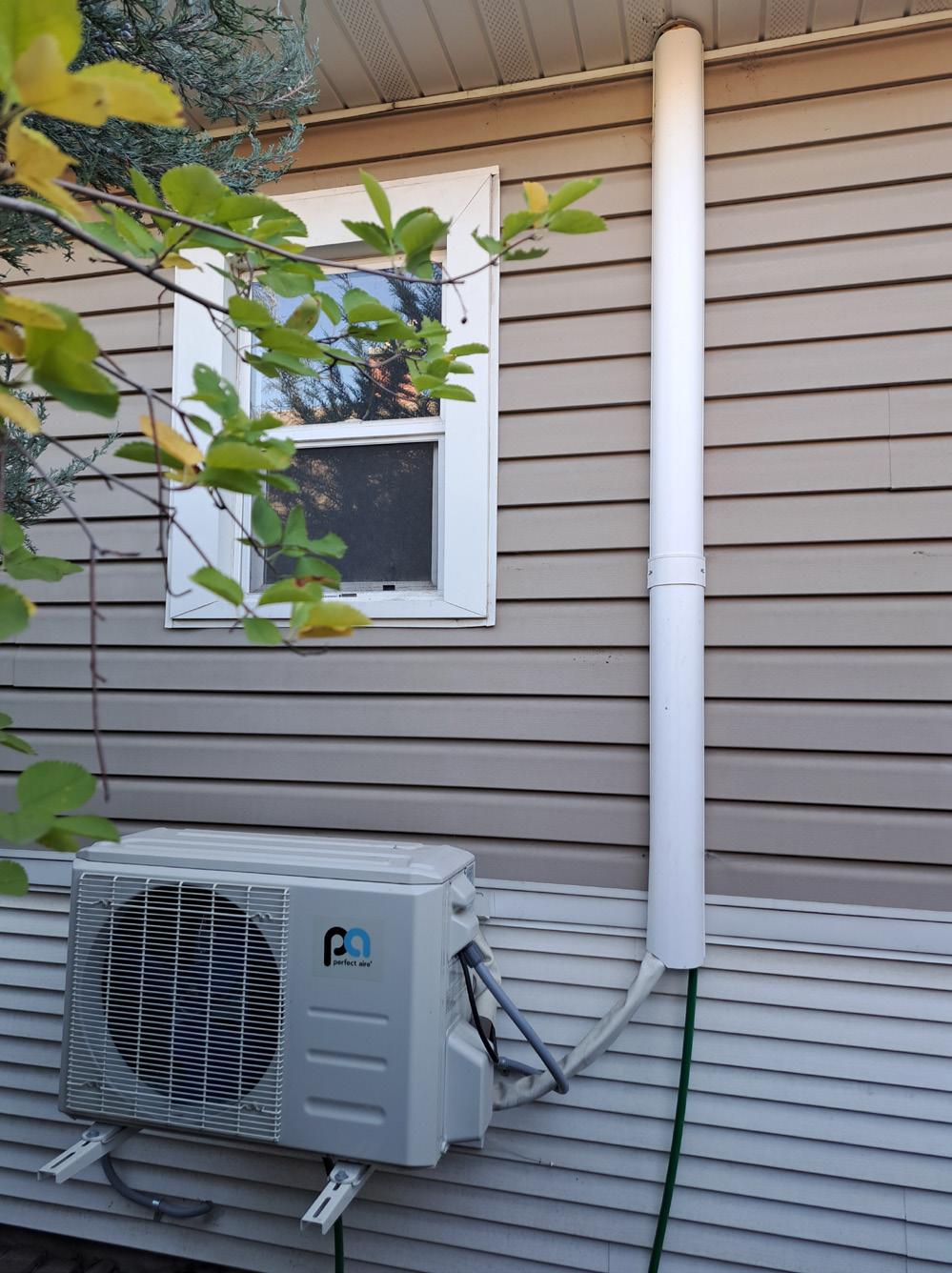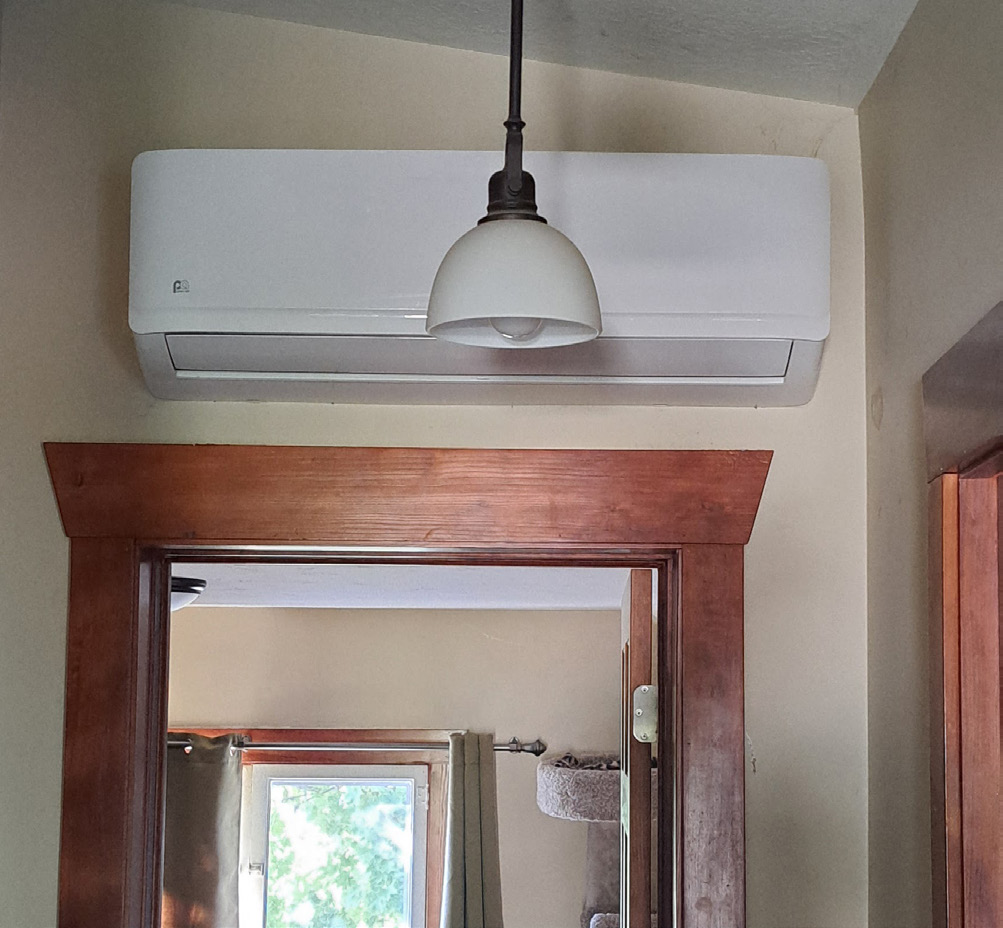Heat Pumps and Mini-Splits
New Options for Home Heating and Cooling
Heat pumps are one of the most versatile pieces of equipment in the HVAC (heating, ventilation, and air conditioning) world today because the same equipment is used for both heating and cooling. Heat pumps can be set up to extract heat from the ground, from water, or from the air, with air-source heat pumps being the most common for residential HVAC. As the technology continues to advance, heat pump application in colder northern climates is improving, and rebates and tax incentives are available to reduce the costs of moving to this more energy-efficient technology.
WHAT IS A HEAT PUMP?
In contrast to a furnace that burns fuel to produce heat or a swamp cooler that evaporates water to produce cool air, heat pumps work by moving heat from one place to another. Heat pumps use a refrigerant to absorb energy (heat) when it changes from a liquid to a gas. Heat pumps circulate refrigerant in a closed loop between the inside and outside of a home using a compressor that forces the refrigerant in gas form back into liquid to release heat. The direction of the heat transfer is simply reversed to switch from heating in the winter to cooling in the summer. In the past, heat pumps have not worked well in cold climates like Montana because there is so little heat outside in the winter to capture and move inside. However, even when objects are very cold, if they are above absolute zero (-460 degrees Fahrenheit) they contain heat, and as the technology has improved, heat pumps have become much more feasible for heating in Montana.

Heat pump for a whole house. The black lines at the bottom carry the refrigerant through the closed loop, into the house where the heat is exchanged for delivery through a central air system. Photo: Adam Sigler, MSU Extension
WHOLE HOUSE VERSUS ONE ROOM
Heat pumps are now being installed on a regular basis in Montana, connected to central air to heat and cool entire homes. Some of these systems may struggle to keep up with heating demand during the coldest periods of Montana winters, so alternative heat source backups for those coldest periods are commonly still advised. In cases where one room or a small area (possibly a bedroom or office) can benefit from independent heating and cooling, smaller systems (commonly called mini-splits) can be installed. These small systems have a unit with a fan that mounts on the wall inside the home and is connected to the compressor outside, so the connection to central air is not necessary.

Mini-split heat pump mounted on the outside of a house, with refrigerant lines that run to the air handler mounted inside the house (below). Photos: Alex Anderson
DIY VERSUS CONTRACTOR INSTALLATION
There are a few things to keep in mind when shopping for a heat pump. DIY (do-it-yourself) heat pump installations are becoming increasingly popular. While these systems can be very effective and simple to install, there are a few things to consider. Most rebates will require a licensed contractor to complete the installation, and many contractors are reluctant to perform repair work on these style heat pumps, as repair costs can quickly exceed the cost of a new unit. While the installation may be simple enough for a homeowner to do themself, major repairs on these kinds of systems will require specialized skills and equipment.
If hiring a contractor, it is important to select a company with demonstrated competence in heat pump work. The U.S. Department of Energy recognizes certain training programs as “Energy Skilled,” and contractors with this training have learned the intricacies of sizing and installing these systems. If planning to apply for a rebate, be sure to ask if the model being quoted is in the approved CEE (Consortium for Energy Efficiency) directory of equipment. It is also always a good idea to have a professional perform an assessment of how much heating and cooling the home requires (sometimes called a load calculation) so that systems can be sized appropriately.

Mini-split component mounted inside the house that is connected to the closed loop refrigerant lines and has a fan to blow the heat adjusted air into the home. Photos: Alex Anderson
Heat pumps are increasingly viewed as the future of household heating and cooling, but it will take some time to make the transition. If the plan is to run a home exclusively with heat pumps, it is important to note that older homes may struggle to maintain temperature due to air leakage and lower insulation standards. Updates to insulation and envelope tightness (how tightly sealed a home is) may have a drastic impact on heating needs, meaning that the equipment currently in place could be using more energy than necessary. Luckily, there are also rebates for having an energy audit performed on a home and for improving a home’s weatherization. Reach out to a contractor or a certified energy auditor to start making the moves toward a more energy-efficient home.
|
HOME ENERGY RESOURCES Consortium for Energy Efficiency (CEE) list of approved appliances: www.ahrinet.org/certification/cee-directory Northwestern Energy incentives:www.northwesternenergy.com/billing-payment/ways-to-save/rebates-incentives Montana DEQ incentives: deq.mt.gov/energy/Programs/efficiency US Department of Energy rebate information:www.energy.gov/scep/home-energy-rebates-programs |
Riley Duecker is an HVACR/R Instructor at Gallatin College.
